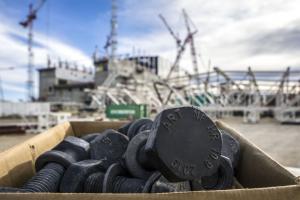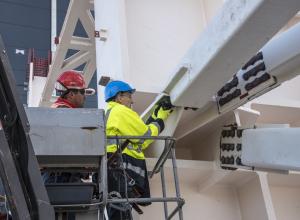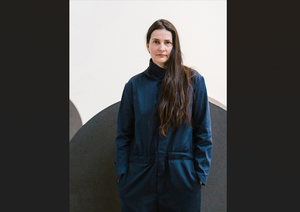A humble connector of art and science
Tens of thousands of M30 bolts connect the muscular steel elements of the Tokamak Building roof structure. As a functional unit, the massive roof framework must support the twin tracks of the overhead crane—which in turn must carry components weighing as much as 1,300 tonnes, manoeuvring each one gently into its place in the ITER Tokamak. Sans Titre is one bolt among many. What makes it special?
Director-General Bigot sees a similar significance: "I am really pleased that Christine Corday selected a bolt as the component that she would contribute to ITER. Bolts are the links that connect the pieces of the machine and structure, in the same way that artists and scientists serve as links to bring our society together and advance our culture." As Bigot sees it: "Art and science are two human activities that have a lot of similarity to each other. You invent a new world. You explore beyond the known frontiers. You call upon emotion and rationality. The results are supposed to be universally shared to create links between people. It is a critical part of our culture and identity. Many scientists have strong arts interests; and many artists are deeply interested in science, humbly seeking introductions to gain understanding."
As humans, we dream. The particles from which we are fabricated are the stuff of stars, configured over countless millennia into a peculiar species that seeks to imagine and shape its own future: in art, in science, and in their blended narrative. In the quest to recreate and harness fusion, the force that enables and sustains our existence, there is a certain poetry. Corday's work is a fresh expression of that "material conversation."
Learn more about the work of Christine Corday here.




